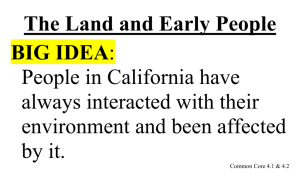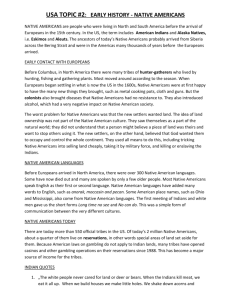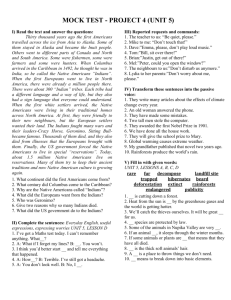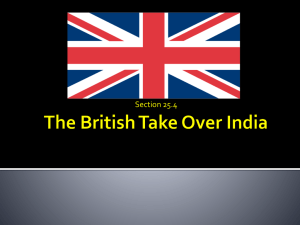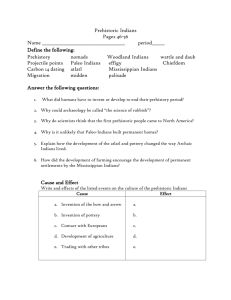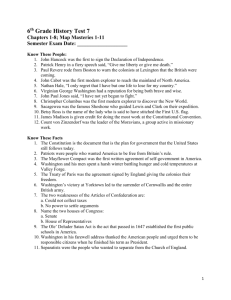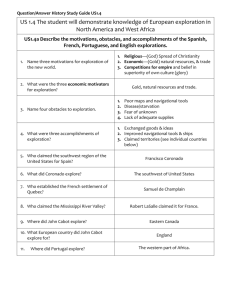KEY WORDS IN LECTURE 1 - Lone Star College System
advertisement
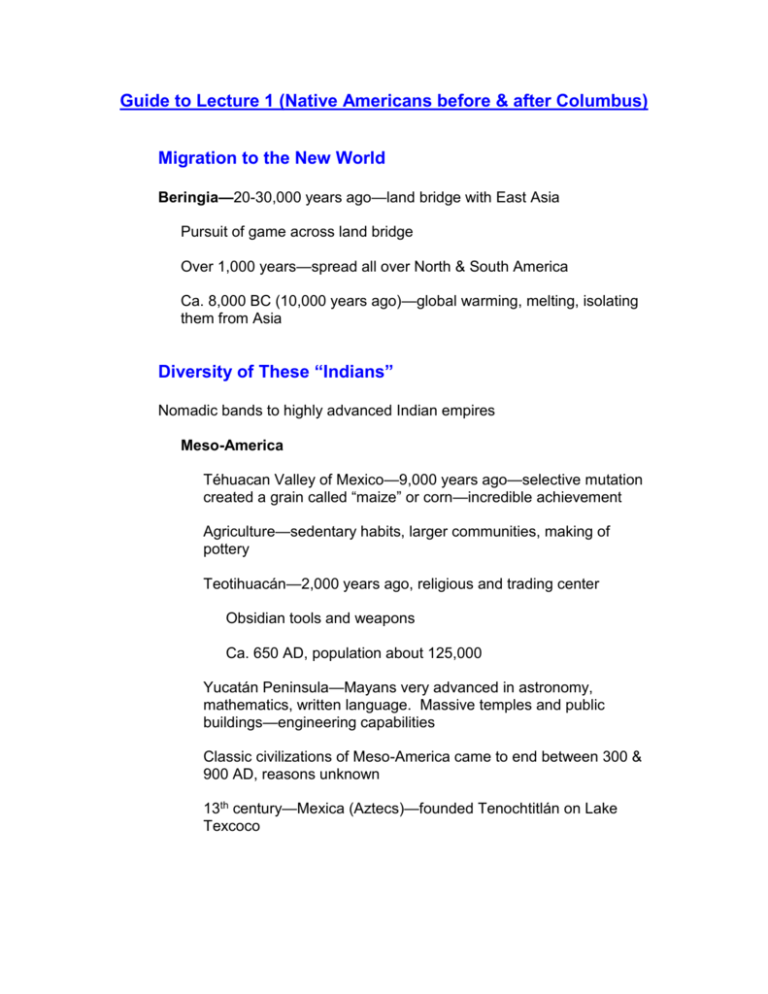
Guide to Lecture 1 (Native Americans before & after Columbus) Migration to the New World Beringia—20-30,000 years ago—land bridge with East Asia Pursuit of game across land bridge Over 1,000 years—spread all over North & South America Ca. 8,000 BC (10,000 years ago)—global warming, melting, isolating them from Asia Diversity of These “Indians” Nomadic bands to highly advanced Indian empires Meso-America Téhuacan Valley of Mexico—9,000 years ago—selective mutation created a grain called “maize” or corn—incredible achievement Agriculture—sedentary habits, larger communities, making of pottery Teotihuacán—2,000 years ago, religious and trading center Obsidian tools and weapons Ca. 650 AD, population about 125,000 Yucatán Peninsula—Mayans very advanced in astronomy, mathematics, written language. Massive temples and public buildings—engineering capabilities Classic civilizations of Meso-America came to end between 300 & 900 AD, reasons unknown 13th century—Mexica (Aztecs)—founded Tenochtitlán on Lake Texcoco North America Mostly hunters Far-flung trade evident Poverty Point, Louisiana: enormous mounds—materials from Great Lakes, Missouri, Kentucky, Indiana and Ohio Craftsmen making jewelry, stone figurines, tools and clay objects from 1800 BC. Similar settlements in Florida and Missouri Ohio Valley—mound-builders—Hopewell people (100 BC to 400 AD). Artifacts from hundreds of miles in all directions Far north—Eskimos and Aleuts adapted to severe conditions— primarily fishing Southwest Most distinctive cultures—corn 3,500 years ago—oldest in North America By 500 AD, three similar cultures Hohokam in Arizona—irrigation canals Mogollon (ancestors of the Zuni)—Arizona and northern Mexico—dug houses into earth Anasazi (ancestors of the Pueblos)—large aboveground housing complexes, elaborate water systems East Cahokia—Missouri trading center—up to 20,000 people, pyramids Cultural Traits (Generalized) Enormous cultural chasm between Indians and Europeans Nature—Indians in harmony, Europeans dualistic view (conflict) Spiritualism—Indians deeply spiritual—animism, shamanism. Europeans monotheistic—highly offended by animism (“Black Robe”) Property—Indian concept different from Europeans. Ownership of land incomprehensible to Indians, but of high importance to Europeans Warfare—frequent intertribal warfare among Indians—used to Europeans’ advantage Justice—Indians believed in retribution (“eye for an eye”). Retaliation and huge kinship networks, far more important than for Europeans Economy—Indians, subsistence—gathering, hunting & fishing, agriculture. Clear separation by sex of labor responsibilities (farming was woman’s work). Irony: Indian development of corn and potatoes, plus squash and beans led directly to increase of European population. Level of development—Indians literally stone age people without the wheel, becoming highly dependent on white man’s inventions Effects of European Trade on Indians Dependence on Europeans for firearms, re-supply as prove more effective than old methods. Alcohol wrought havoc with Indians, created toxic dependence. Utter devastation of Indians due to European diseases—smallpox, influenza, chicken pox, measles. Attrition rate in some areas as high as 95% Mexico—25 million people in 1519, 1 million by 1605 No prior exposure, no immunities Syphilis the one exception which went the other direction Importance of the Diseases on Indians Facilitated conquest of large areas with small numbers of Europeans Psychological effect deadly—offended the spirits—shamans unable to help—questioning ancient beliefs. Settlers of Jamestown (1605) native populations already largely depopulated, demoralized, debilitated by disease. Indian literally doomed from the moment the white man set foot on the shores of the New World.
